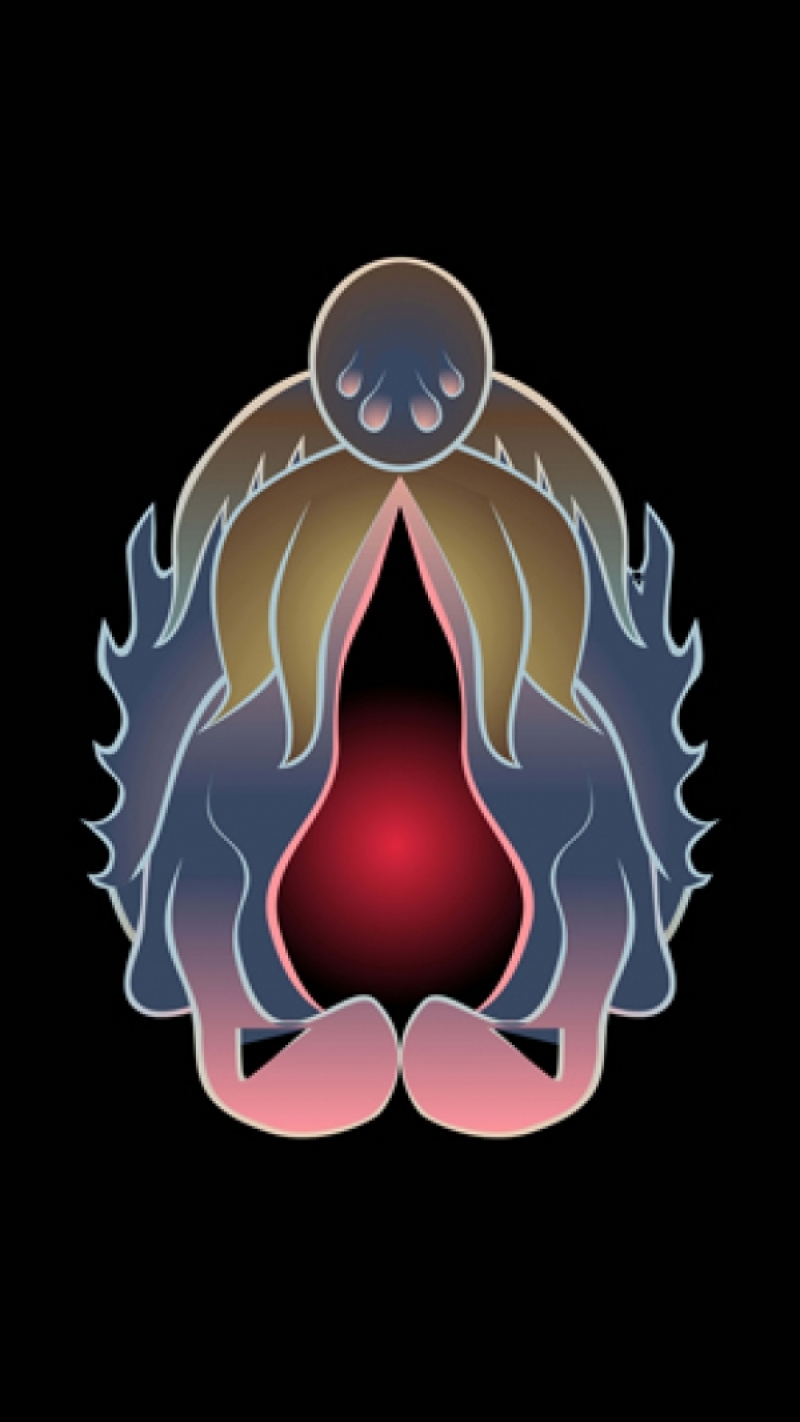exhibition review: philip brophy’s ‘colour me dead’

Philip Brophy, frame from Colour Me Dead—Chapter 5: The Hungry Vagina, 2013, synchronized high-definition animation displayed on 3 monitors, sound, 6 minutes. © Courtesy the artist
Vaginas. Pretty weird, right? They excrete things, they sprout things, sometimes they make embarrassing noises during sex and the owner has to pretend it didn’t happen, or at least pretend they didn’t hear it. I know, the weirdest. They’ve also been the subjects of intense artistic fascination—especially from male observers—basically since art was invented.
Philip Brophy is the man behind Colour Me Dead, an exhibition currently showing at the Ian Potter Museum of Art, the University of Melbourne. Colour Me Dead celebrates, probes and dissects the female nude; or more accurately, plucks historical examples and reinterprets them into something strikingly modern.
Brophy has maintained a fascination for the body horrible throughout his three decades of artistic practice. You may remember him from such filmic gems as Body Melt (feat. a fresh-faced Lisa McCune and Harold from Neighbours), or, Salt, Saliva, Sperm & Sweat (a rather visceral exploration of the day in the life of an office worker’s digestion tract).
This latest exhibition is the result of an examination of over 1,500 historical nude artworks from 300 artists over 300 years—everything “from Neoclassical wet dreams to Mannerist soft porn”. Brophy aims for the culmination of his research to eventually become an 18-chapter book. The six digital works on display here parallel what will be published.
Before you even walk into the exhibition’s main gallery, you’re confronted with an intense wet, squelching noise. I must have appeared puzzled, as a softly-spoken man at the front desk shot me a gentle, cow-eyed look that seemed to pleasantly infer, “oh, you must be here for the vaginas?”.
Upon entering the gallery, three screens become visible, the mainspring of the incessant clammy squelches. Each screen features a kaleidoscopic formation, abstract, but all unmistakably vaginal. Some morph into seemingly floral arrangements, others are sharp and pointy looking, teeth-like. The wet, sucking sound continues and the animations loop over ad infinitum. These screens are the centrepiece of the exhibition, and collectively entitled, The Hungry Vagina: how the body threatens, devastates, desiccates, devours. A plaque on the walls shows a grid of all the works Brophy has drawn upon to create the piece. Some are unavoidably graphic (Bellmer’s I am God, Courbet’s Origin of the World) some infer a more polite sexuality (Man Ray’s ‘Woman with Long Hair’) and some seem more innocuous than explicit (Duchamp’s ‘The Fountain’).
Moving further into the gallery, a beige-toned orb hangs suspended from the ceiling. Images slowly bleed onto the screen, they overlay each other, they gradually morph and splinter. This all happens at a mesmerisingly gentle speed, as if watching the sand of an overturned eggtimer. This piece scrutinises how the female body has been lit, posed and transfigured to suit the male gaze throughout history.
On a nearby wall a projected blue light shimmers across a long procession of vectored images. This chapter explores the association of femininity and water—the duality of something at once calm and placid, with an underlying potential for irreconcilable destruction. Brophy’s images are simple vector renderings of iconic paintings; they have been reduced to simplistic blue forms. (Millais’ Ophelia has suffered noticeably, her once-delicate features now resemble melted wax).
The opposite room houses two more chapters. The first is a rather hilarious set of Indian ink drawings. Here Brophy has transformed the heroines of various historical works into a gang of she-devils mounting hot-rod cars. They leer with the ferocity of a cartoon rendering of a football mascot and wouldn’t look out of place on the bicep of an inmate.
Also in this room is a video piece in which viewers must climb stairs and watch from above as the video is projected onto the floor below them. Two nude women re-enact various historical paintings. The elevation at which we view the work seems somehow sinister, we are very much observers, the women are very much subjects of our gaze. There is a cold distance that exists between the observer and the observed.
After ascending the stairs to level two of the Ian Potter Museum of Art, we arrive at arguably the most disturbing piece in the collection: 20-minute video installation, The Morbid Forest: how the body is left for dead, to be exposed, to decompose, to be discovered. The film features no dialogue, just a sinister humming and squawking bush bird noises. Male onlookers gaze upon unwitting female subjects. The film cuts to images of naked women’s bodies, face down and seemingly left for dead in the indifferent bush. This piece has sent a rippling of outrage throughout women’s anti-violence campaigners. Melinda Tankard Reist, one such campaigner, says artists “need to exercise responsibility by not reinforcing the sexualisation of violence, or using violence against women as sexual titillation”.
However, to imply that Colour Me Dead is an endorsement of violence is to grossly misunderstand it. It’s hard to argue that Brophy’s work acts as simple titillation. This is a referential body of work, an examination of historical modes of representation above anything else. It must be remembered that just because a psychosexual violence is depicted, doesn’t mean it is endorsed.
Colour Me Dead is almost head-spin-inducing as Brophy pings from one medium to another. However, the wealth of sources he has drawn upon demonstrates—from a historical standpoint—competing, fragmented ideas of what a female form ought to be (and concurrently provides an extensive lesson in art history). And the contemporary nude menagerie he lays before us in this exhibition is nothing less than viscerally fascinating.
‘Colour Me Dead’ is showing at the Ian Potter Museum of Art, the University of Melbourne until September 8. Admission is free.


Pingback: Phillip Brophy’s Colour Me Dead | Kimberley Thomson